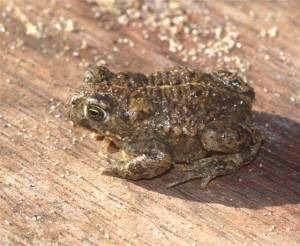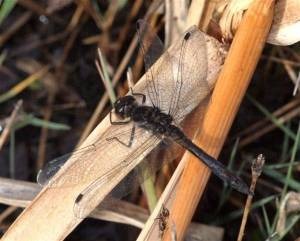Dr Phil Smith’s Wildlife Notes
October 2010
The first Saturday of the month saw me at Preston for the Lancashire Wildlife Trust’s Volunteer Conference and Annual General Meeting. It was great to see such a large crowd of enthusiasts, with over 180 people attending. Our hard-working Freshfield Dune Heath volunteers were awarded the Volunteer Group of the Year prize, sponsored by the Community Gateway Association. At the AGM, I confirmed my decision to stand down from the Trust’s Council after 40 years. Time for someone younger and with the necessary business and financial skills to take over.
October usually presents opportunities to do some late season botanising. A visit on 8th to Crosby Marine Park with Patricia Lockwood was rewarded with a new young plant of one of our rarest species, the Dune Wormwood. First found here in 2004, this plant grows in only one other place in Britain. There are now five individuals at Crosby, the original plant being nearly 4m in diameter.
A friend’s phone call alerted me to another interesting plant, the spectacular Thorn-apple near Wicks path, Formby, which I went see on 10th. I was delighted to find several huge specimens complete with trumpet-shaped white flowers and large spiky fruits, these looking superficially similar to those of the much rarer Long-spined Thorn-apple seen in September. Originating in the Americas, these exotic members of the potato family are highly poisonous.
A few warm, sunny days in mid-month gave a boost to autumn insects, a visit to the Birkdale Green Beach and Ainsdale Sands Lake area on 11th producing a good count of 40 Common Darters and eight Migrant Hawkers. Even better was the discovery of a baby Natterjack Toad under timber on the Green Beach. This was the first (and only) confirmation of breeding success this year.

Also during this period, I recorded three Northern Dune Tiger Beetles, probably the latest ever seen on the Sefton Coast. Several kinds of butterflies were still active, with three Red Admirals and a Comma feeding on Ivy flowers at Ravenmeols. Another good find during the warm spell was a handsome Black Darter on a scrape at Ainsdale Sandhills. The smallest of our true dragonflies, this species is usually associated with peat bogs but often disperses in late summer and may then turn up on the coast.

Ainsdale was graced by a new insect for Sefton on 6th when John Dempsey reported finding an Oak Bush-cricket in his garden. This attractive species is quite rare in northern England, the nearest records being in north Cheshire, south Manchester and east of Preston.
This October seems to have been a relatively quiet month for local birdwatchers. Nevertheless, the usual influx of Pinkfooted Geese produced record numbers roosting at Martin Mere and I found about 3000 on a stubble field at Lydiate on 22nd. Great views from the road allowed me to search through the flock with a telescope to pinpoint two biscuit-coloured leucistic Pinkfeet and a superb adult Green land Whitefront, with dark-chocolate plumage and a characteristic white blaze at the base of its orange beak. Several Lapland Buntings were spotted on the coast but none came my way. The month ended with reports of a huge invasion of Waxwings from Scandinavia; a bird to look out for on berried trees and shrubs and enough to brighten up any winter’s day.
